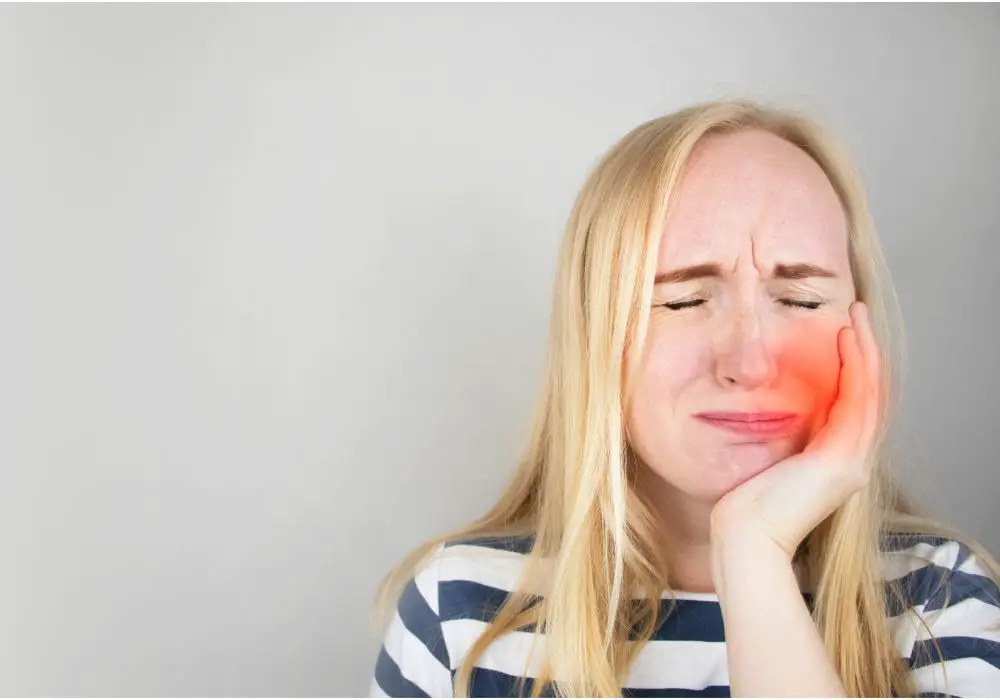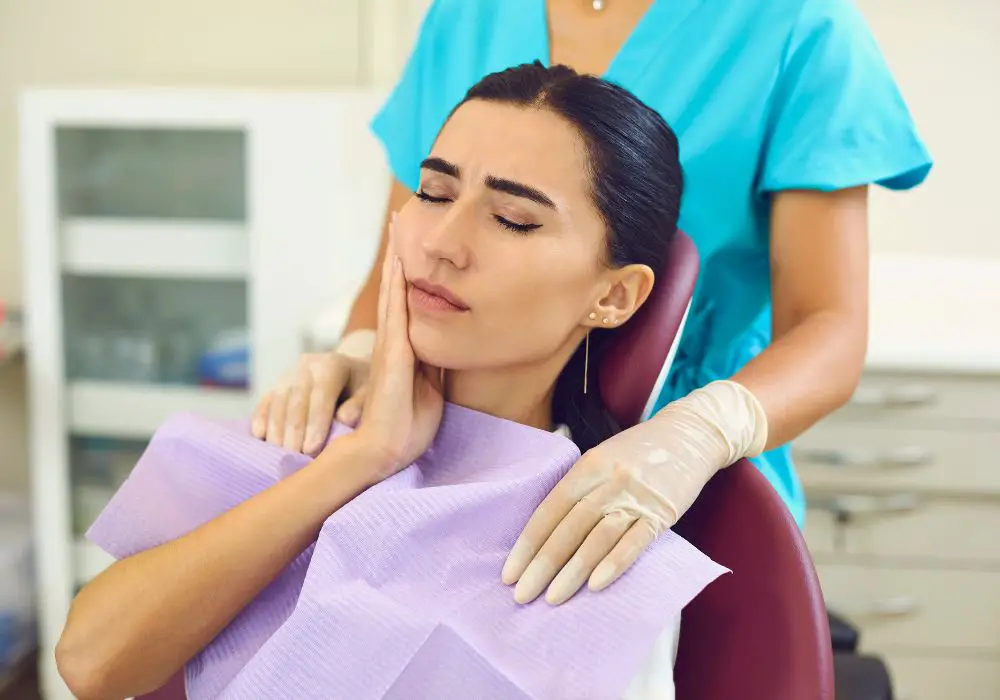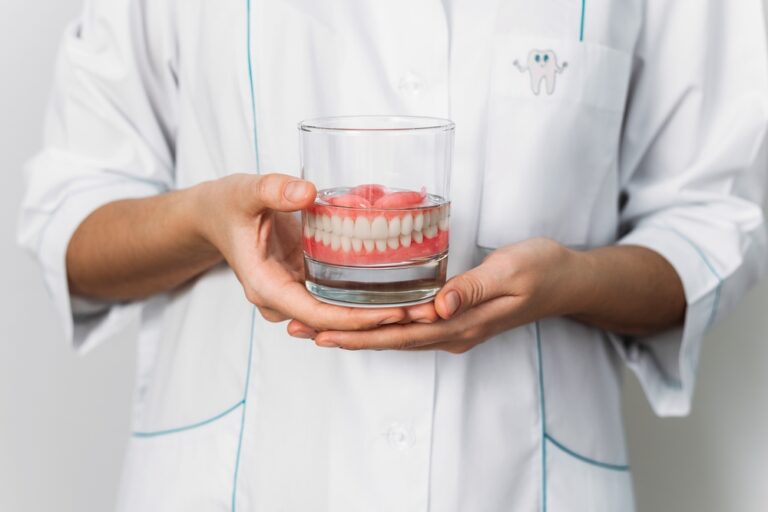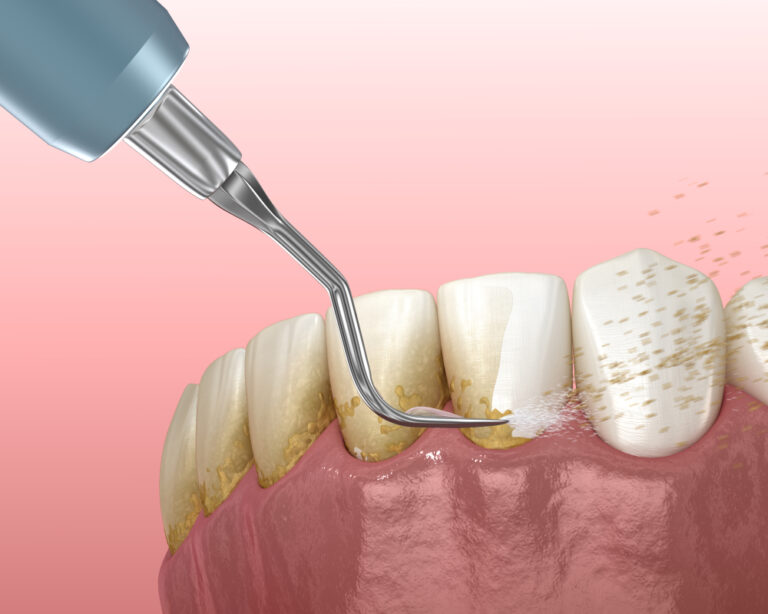Why Do My Teeth Hurt When I Get Hit in the Face?
If you’ve ever suffered a punch to the face, been hit by a ball, or taken a bad fall, you may have experienced severe pain in your teeth as a result of the impact. It can be disorienting and alarming when your teeth hurt after trauma to your face. But there are clear reasons behind this phenomenon.
When your face undergoes significant physical force, either from an object hitting you or you hitting an object, the energy of the collision travels through the soft tissues of your face and focuses squarely on your teeth. Your teeth essentially act as shock absorbers, bearing the brunt of the concussive impact. This can cause damage to the tooth structures and expose highly sensitive nerves, leading to sometimes severe dental pain.
Understanding the anatomy of your teeth and how facial impacts cause injury can help explain exactly why you feel this radiating dental pain when you sustain blows to the face.
Detailed Tooth Anatomy and Function

Human teeth are complex structures composed of multiple layers, nerves, blood vessels, and connective tissues. Each component plays an important role in tooth function and health.
Enamel
The outermost layer of a tooth is called the enamel. Enamel is composed of 96% inorganic hydroxyapatite minerals that gives teeth their characteristic whitish hue.
Enamel is the hardest substance in the human body, even stronger than bone. This protects teeth from wear and tear during chewing and grinding.
Enamel also acts as a barrier to prevent bacteria from invading the inner tooth layers. It is normally transparent but reflects underlying dentin color through it.
The enamel surface is coated in a microbial biofilm called plaque. Good oral hygiene is needed to remove plaque and prevent decay of enamel from acidic byproducts.
Dentin
Underneath the enamel layer is dentin, which makes up the bulk of each tooth’s structure. It is a bone-like matrix comprised of 70% inorganic hydroxyapatite crystals bound together by an organic collagen framework.
Within dentin are microscopic hollow tubules that radiate outward from the inner pulp chamber to the enamel and cementum. These contain cellular projections called odontoblastic processes that sense stimuli and transmit pain signals.
Since dentin contains less mineral material than enamel, it is softer and more flexible. This cushioning property helps evenly distribute bite force impact.
Dentin is naturally yellowish in color, but deeper layers near the pulp chamber are less mineralized and more reddish-orange. Its color shines through the translucent enamel giving teeth their overall hue.
Pulp
At the core of tooth is the pulp chamber which houses the soft tissues collectively called the pulp. Each tooth contains a nerve bundle that stems from the trigeminal nerve which carries general sensory information from the face to the brain.
Pulp is composed of connective tissues, blood vessels, and nerves. It provides sensation, nourishment, and cellular waste removal for dentin production. Damage to dentin exposes pulp nerves and results in tooth pain and sensitivity.
If decay, fracture, or trauma affect dentin close to the pulp chamber, inflammation and infection of pulp tissues can occur. This condition is called pulpitis and requires root canal treatment to remove inflamed pulp and prevent abscess.
Cementum
Cementum covers the dentin matrix surrounding tooth roots. It is softer than enamel but relatively hard and durable. Cementum’s surface has Sharpey’s fibers embedded within it which allow attachment of periodontal ligaments and anchoring of the tooth root within the jawbone socket.
Cementum helps hold teeth in place and is essential for enabling teeth to withstand chewing forces. It can be deposited throughout life to compensate for continuous tooth eruption and wear.
Periodontal Ligament
The periodontal ligament is a group of specialized connective tissue fibers that essentially tether each tooth to the bony socket. The ligament fibers are embedded within the cementum on the tooth root and extend into the jawbone like suspension cables.
This flexible attachment absorbs forces and keeps teeth firmly in place while allowing for controlled minute movements. The network of tissues provides proprioception to detect tooth position and direction of force applied.
The periodontal ligament receives its blood supply from vessels passing through small holes in the socket surface called Volkmann canals. Any damage to the ligament from trauma can cut off circulation and nourishment to the tooth.
How Do Blows to the Face Damage Teeth?

With this anatomical background, we can now look at how different kinds of facial injuries affect the structures of teeth and result in several common types of trauma:
Enamel Cracks and Chipping
When the force of impact is concentrated on a small surface area of enamel, cracks and fractures can occur. Linear cracks act like faults planes inside the enamel surface that weaken its structure. Repeated stresses from chewing or grinding can further propagate the cracks.
Chips and fractures that expose the underlying dentin are extremely painful due to temperature sensitivity and bacterial inflammation entering through the defect. Rough fractured edges can abrade and damage the tongue and cheek tissues as well.
Dentin Damage
More extensive damage from powerful blows can fracture through enamel and extend into dentin. This directly exposes open dentin tubules to the oral environment.
Dentin contains a hydrophilic component called dentinal fluid that readily transmits pain stimuli throughout the tubules to the innervated pulp. As a result, even mildly irritating substances like cold air or sweet foods contacting exposed dentin can elicit sharp pain.
Furthermore, bacteria and acids can enter the opened tubules leading to infection and inflammation called dentin hypersensitivity. The loss of insulating enamel allows heat conduction making temperature extremes painful as well.
Pulp Inflammation and Death
A severe impact that destroys enamel and dentinlayers risks hitting the pulp chamber itself. This crushes soft pulp tissues and nerves causing extreme pain.
Pulp exposure also provides a direct pathway for oral microbes to invade and infect the root canal system. The inflamed pulp becomes swollen and compressed inside the unyielding dentin walls. Pressure buildup causes throbbing pain until the nerve dies from sustained damage and lack of blood supply.
However, infection remains and abscesses form at the root apex releasing pus into surrounding bone if left untreated. The dead tooth still requires root canal therapy to remove all diseased remnants and prevent further spread of infection.
Tooth Fracture
A significant axial blow or forceful sudden bending of a tooth can cause the brittle enamel to fracture under tension. This may fracture the tooth vertically through the root or horizontally below the gum line.
Split teeth become loose, painful, and prone to infection. Root fragments that remain anchored may require extraction, while coronal portions may be restored with crowns or bridges depending on severity. Quick dental treatment is key to save fractured teeth.
Tooth Subluxation and Avulsion
Teeth may become partially dislodged from their sockets due to trauma. This injury is termed subluxation and can stretch, compress, or tear the anchoring periodontal ligament.
More severe impacts can completely displace teeth from the jaw, known as avulsion or exarticulation. This rips and ruptures the periodontal ligament, severing vital nerve and blood supply to the tooth.
The traumatic avulsion of permanent teeth requires urgent reimplantation if possible to have the best prognosis for survival. Otherwise the injury causes eventual tooth loss.
Why Do Damaged Teeth Become Painful?
Injuries to teeth from facial trauma trigger pain through several interrelated mechanisms:
- Dentin exposure – Communication of external stimuli to the pulp nerve fibers via open dentin tubules
- Pulp inflammation – Increased intra-pulpal pressures from edema and vascular changes
- Periapical inflammation – Inflammation and pus formation at root apex from pulp infection
- Periodontal ligament injury – Sprains, tears, and compressed tissue fibers around the tooth socket
- Dental nerve trauma – Direct damage to trigeminal nerve fibers and branches entering the pulp
- Broken tooth fragments – Fractured enamel cutting surrounding soft tissues of tongue and cheek
Even a tiny exposed dentin area from a cracked tooth can elicit pain. More extensive injuries dramatically increase the likelihood for severe and persistent pain requiring dental treatment.
Risk Factors for Dental Injuries

Certain factors can increase your susceptibility to dental trauma from impacts to the face. These include:
- Lack of protective gear – Not wearing mouthguards or face shields during contact sports or risky work
- Weakened enamel – Teeth decayed by cavities or eroded from acid/abrasion are more prone to fracture
- Preexisting restorations – Dental work like veneers, bridges, braces, and implants fracture more easily than natural teeth
- Protruding front teeth – Prominent incisors often receive the brunt of facial impacts
- Grinding/Clenching – Applying repeated heavy loads weakens enamel and makes teeth more injury-prone
- Age – Children’s developing permanent teeth are more porous and vulnerable to trauma
- Medications – Some drugs like antihistamines and diuretics reduce salivary flow leading to dry fragile enamel
Preventive Measures to Minimize Dental Injuries
You can take several key precautions to protect your teeth from harm when participating in sports, work, or other activities:
- Wear a custom-fitted mouthguard during contact sports like football, boxing, basketball, etc.
- Use protective headgear with face shields for activities like hockey, lacrosse, skiing, or construction work
- Have your dentist evaluate if you grind your teeth at night and get a night guard if indicated
- Maintain good oral hygiene and avoid snacking between meals to prevent tooth decay and enamel loss
- Get prompt dental treatment for fractured, cracked, or otherwise injured teeth to prevent worsening damage
- Consider orthodontic treatment to reposition severely protruding front teeth prone to injury
- Monitor prescription and over-the-counter drug use that causes dry mouth and increases dental risks
However, even with proper precautions accidents can still happen. Being aware of the treatment options can help minimize long-term problems if you do sustain a dental injury.
Emergency Dental Care for Injuries
If you experience severe tooth pain after any facial impact or observe damage like cracks, fractures, or displacement, it is important to receive emergency dental treatment right away to limit complications. Try to take these immediate steps:
- Carefully rinse out the mouth with warm salt water to flush away blood and debris
- Find any tooth fragments and store them in milk/saline then bring to the dentist
- Take over-the-counter pain medication like acetaminophen or ibuprofen to relieve pain
- Stabilize any loose or displaced teeth by gently biting down on gauze or a tea bag
- Apply cold compresses to the outside of facial areas to minimize swelling
Then promptly contact your dentist or an emergency dental clinic. Timely professional treatment can often save an injured tooth and prevent future problems.
Common Dental Treatments for Traumatic Injuries

Depending on the type and extent of damage, your dentist has many tools available to treat teeth after facial injury:
- Reimplantation – Attempt to reinsert completely avulsed teeth back into the socket to preserve tooth viability
- Splinting – Stabilize loose or fractured teeth together with temporary or permanent dental splints
- Restorations – Place composite fillings, inlays, onlays, or dental crowns to rebuild fractured or cracked tooth structure
- Root canal – Remove inflamed dental pulp and disinfect interior of tooth to address infection and allow healing
- Extraction – Remove non-restorable tooth fragments or severely damaged teeth that cannot be saved
- Antibiotics – Prescribe antibiotics to resolve or prevent infection complications
- Night guard – Provide a protective occlusal guard to prevent teeth grinding and reduce risk of further injury
With timely proper care, many injured teeth can be restored and retained long-term, or replaced with dental implants if extractions are unavoidable. Be sure to follow your dentist’s at-home recovery instructions carefully.
Answering Common Questions About Painful Dental Injuries
Experiencing dental trauma, pain, and damage from an impact to the face can be distressing and confusing. Here are answers to some frequently asked questions:
Q: Should I try to put back in a tooth that gets knocked out?
A: Yes, you should immediately gently clean off the tooth root and try to reinsert it into the empty socket if possible. Otherwise, place it in milk or saline solution to keep it moist. Then seek emergency dental treatment ASAP to reimplant it.
Q: How long does dental pain from an injury usually last?
A: It depends on how severely the nerve and tissues inside the tooth are affected. Minor chips and cracks may cause brief pain that resolves once sharp edges are smoothed and protected. But extensive injuries involving the pulp or periodontal ligaments often require dental procedures to resolve persistent pain.
Q: Can a dentist fix a tooth that gets fractured from trauma?
A: Dentists have many great techniques to restore fractured teeth, including reattachment of broken pieces, stabilization splints, composite fillings, dental crowns, and extraction of non-restorable fragments. Prompt treatment ensures the best outcome.
Q: Will a tooth that gets knocked loose eventually tighten up again?
A: With mild injuries, a subluxated tooth that is still partly attached may gradually return to normal as the periodontal ligament heals over several weeks. But the prognosis depends on the degree of displacement and ligament damage. Loose teeth need quick evaluation.
Q: Do dental injuries take longer to heal for children?
A: Yes, children’s developing permanent teeth have larger pulp chambers and openings at the root apex making them more susceptible to infection if the pulp tissue becomes exposed from injury. Kids may require root canal treatment even when injuries would only cause brief pain in mature adult teeth.
Q: Should I avoid chewing on the side with the injured tooth?
A. Your dentist may advise eating only soft foods and avoiding chewing on the affected side until swelling subsides and any loose teeth stabilize or restorations are performed. This helps prevent further damage. Follow all their recovery instructions carefully.
Sustaining dental injuries from impacts to the face can be alarming but seeking prompt emergency treatment is key. With today’s advanced techniques, many damaged teeth can be restored and healed to normal function again. Be sure to protect teeth from harm and see a dentist right away if any trauma occurs.






